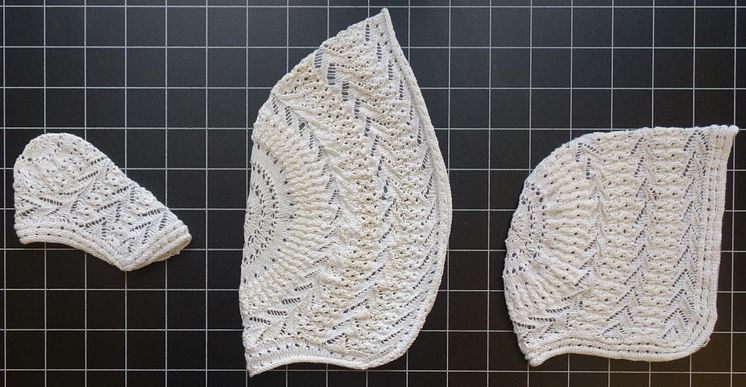
Image -
118. Different shapes caused by to many printing errors.
Two of the Swedish knitting books from the 1840s, “New Patterns for Lace Knitting, etc. and Lace Crocheting” (Nya Mönster till Spets-stickning m. m. samt Spets-Virkning, 1844) and “Charlotte Leander’s Knitting Book” (Charlotte Leanders Stickbok, 1848), contain instructions for knitting a child’s hat, translated from a German manual. The instructions contained so many printing errors that the products of the test knitting were of completely different shapes from those shown in the illustrations included in the manuals. (Left and middle of Figure 118)
Figures 120.1 and 120.2 show knitting of a child’s hat resembling the illustrations, by combining the two Swedish and two different versions of the German instructions.
Hanna Bäckström
- License:
- Media Use
The content may be downloaded by journalists, bloggers, columnists, creators of public opinion, etc. It can be used and shared in different media channels to convey, narrate, and comment on your press releases, posts, or information, provided that the content is unmodified. The author or creator shall be attributed to the extent and in the manner required by good practice (this means, for example, that photographers should be attributed).
- By:
- Hanna Bäckström
- File format:
- .jpg
- Size:
- 4508 x 2336, 2.58 MB